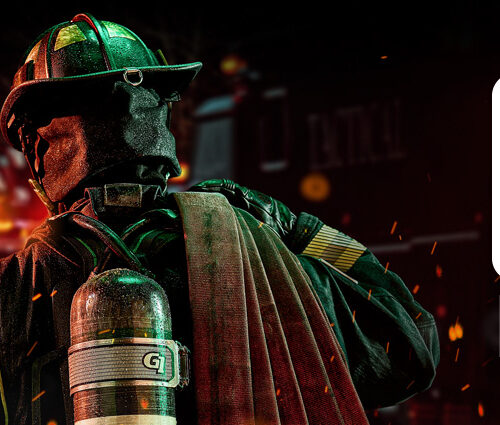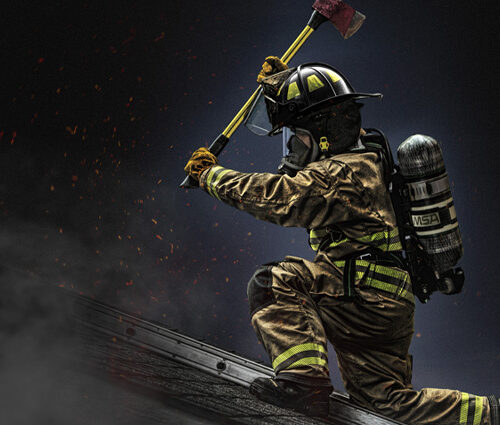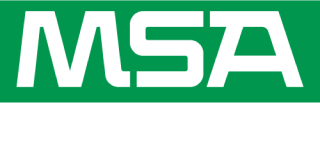
Jeffrey Stull, FireRescue1 BrandFocus Staff
This article reprinted with permission of FireRescue1.
A preview of what is likely to come to fruition in the next editions of NFPA 1971 for turnout gear and NFPA 1981 for SCBA, among other issues
The fire service and industry rely on standards developed by the National Fire Protection Association (NFPA) to establish product design/performance direction that establishes minimum safety levels and user expectations. In general, these standards are revised every five years to address firefighter protection needs, allow for new product technological capabilities, and incorporate improvements in how products are tested.
NFPA 1970 is a new standard that consolidates both turnout gear that has been addressed by NFPA 1971 and SCBA that is covered by NFPA 1981, but it will also include station/work uniforms (NFPA 1975) and Personal Alert Safety Systems, or PASS (NFPA 1982). This consolidation is consistent with the recent NFPA standards strategy to combine similar standards into a fewer number of documents that apply to the fire service. For NFPA 1970, the current revision process is more than halfway complete where the final steps will culminate in a brand-new consolidated standard in either April or August 2024. Both in this consolidation and with the advent of new fire service PPE issues, there are substantial implications to the fire service when the new NFPA 1970 standard is implemented.
Understanding the Process For a New Edition of an NFPA Standard
Individual committees are responsible for each of the standards and have historically addressed revisions of their respective PPE products through each part of the revision process. This process begins about 2½ years before the target revision date where changes to the standard are invited and can be proposed by anyone (called “public inputs”). All public inputs are then considered by the committee, and any accepted changes go forward in creating a first-draft revision of the standard after attaining agreement through a two-thirds majority affirmative ballot of the voting committee members.
This same process is repeated in a second stage where NFPA solicits public comments on the first draft that are similarly reviewed and are accepted through committee balloting for putting together the second revision. This is where the draft of NFPA 1970 currently resides in the revision process.
There are still additional steps before the new NFPA 1970 is published. Once the second draft is posted by the NFPA on their website, it is open for anyone to take issue with any actions that were approved in creating the revision. This last review period allows the opportunity for any individual to disagree with any change by suggesting the action be reversed. If undertaken, a Notice of Intent to Make a Motion at the Annual Meeting (NITMAM) is filed, and if it meets the NFPA criteria, the individual then tries to persuade the NFPA members at their annual meeting to overturn prior committee action. This brings the standard to its original language before the change.
Even if NFPA members don’t want to reverse any committee actions, there is still a last opportunity if the individual submitting a NITMAM makes an appeal to the NFPA Standards Council. The council then holds a hearing where both sides of a particular issue argue their case on any specific action taken on the standard. For NFPA 1970, given some of the controversies that have arisen during the revision process, a NITMAM or appeal or both are entirely possible.
Significant Changes Affecting Turnout Gear Requirements
The most significant changes to NFPA 1971 deal less with the fundamental performance of turnout gear and more with new issues that are of increasing importance to many firefighters. These include three major areas: (1) addressing PFAS and restricted substances in gear; (2) examining the impact of fireground contamination on gear and its overall durability; and (3) ensuring consistent performance for the entire ensemble.
PFAS and restricted substances. PFAS has become a touchstone for several firefighters, which has already resulted in different industry changes affecting gear, whether through the enactment of regulations requiring full disclosure of PFAS in gear by manufacturers in some states to several material suppliers transitioning certain of their fabrics to non-PFAS versions. As part of the current draft NFPA 1971 revision, several changes have been proposed to require the measurement of PFAS in gear and apply criteria for acceptable levels according to many practices already used in the general apparel industry. Also included are measuring levels and applying limits for other “restricted substances” such as lead and other heavy metals, residual chlorinated solvents, certain process chemicals, and over 300 different chemicals according to the globally accepted criteria. In essence, the new requirements simply impose what are deemed already existing voluntary practices followed by several manufacturers and material suppliers, including many of those providing firefighter PPE. In addition, additional enabling language has been proposed that permits manufacturers to make a “PFAS-free” claim when testing demonstrates PFAS at a level below a specified measurement limit. Further to this topic, labeling of gear in terms of identifying materials will become more explicit in describing their composition.
Other PFAS-related changes were proposed and are in the second draft to lessen some criteria that are applied to moisture barriers, namely in removing the light degradation resistance test, replacing the viral penetration resistance test with a different blood borne pathogen protection test, interchanging fire-resistant hydraulic fluid with mineral oil-based hydraulic fluid, and reducing the heat exposure. These changes were proposed to make it easier to introduce non-PFAS moisture barriers, where these criteria have been perceived as inhibiting alternative moisture barriers difficult. However, no changes were made that would diminish the heat stress impact of moisture barriers on firefighters. Instead, the committee added a supplemental test for measuring a property called evaporative resistance (in addition to the total heat loss requirement already in place).
Cleaning ease and durability. The ability to clean clothing effectively has been an escalating fire service concern, particularly when some studies and cleaning verification test data from different independent service providers show contamination removal rates close to only 50%. To address this area, the committee has introduced requirements for measuring how well individual garment, hood and helmet materials can be cleaned for removing both organic and heavy metal fireground contaminants. While no minimum criteria have been set, manufacturers must report the levels of contaminant removal that have been attained. Additionally, a test measuring the ability to remove diesel fuel from outer shell materials so there is no residual chemical present on the material capable of igniting has been put into the second draft for reporting purposes. For helmets, stronger criteria with a new test method have been added to assess how easily soft goods (i.e., ear covers, sweatbands, chin straps and nape devices, but excluding suspension system softgoods) can be removed for better cleaning because some data have shown very high levels of contamination on the suspension system following fireground exposures.
More frequent cleaning, along with changes in material technology, may have an impact on gear service life, even when properly maintained. For this reason, some older tests specific to protective garments now include more rigorous preconditioning of samples in a way to better replicate expected use conditions to assess if reductions in material strength and other properties occur. While the UV light test was removed for moisture barriers, it is being applied in a manner more consistent with gear exposure by exposing the outer shell.
Consistent gear protection performance. Perhaps one of the more momentous changes in the next edition will include the proposed mandatory particulate blocking capability for all hoods for structural firefighting. In the 2018 edition, particulate blocking hoods were an option. Yet, with the new edition, all structural firefighting hoods would need to effectively filter out soot and other fireground particles to allow certification. In fact, this requirement will now apply to hood seams with performance evaluated after the same ruggedized conditioning indicated above. New sizing requirements for hoods are being added, recognizing multiple sizes may be needed for the less elastic particulate blocking hoods. This requirement is being added to ensure adequate fit and protection.
An optional set of criteria for overall ensemble protection against particulates and liquids have been updated to focus mainly on the garment and to provide more quantitative procedures so that manufacturers can demonstrate better contamination protection from soot and other fire scene particles. The new NFPA 1970 will also include an annex for a number of full ensemble tests that look at systems level insulation, heat stress, and mobility that manufacturers or fire departments can use to get a better perspective for how all the parts of the ensemble affect their protection, comfort and function.
Other changes. New or updated criteria and test methods have been added to address the use of electronic equipment used in gear from the standpoint of not contributing new hazards as well as retaining its intended performance after high heat exposures. A more realistic test to evaluate DRD deployment was added. Many other tests have either been updated or otherwise improved to address repeatability and offer better assessments.
Changes for New-Edition SCBA
There is a much shorter list for upcoming changes addressing SCBA design, performance, labeling, and user information in the NFPA 1981 portion of new NFPA 1970. This is primarily because the fire service and industry consider the SCBA to have evolved to a still relevant level of optimal minimum performance.
Primary revisions related to electronic safety and capabilities
In the new edition, electrical safety will be addressed more robustly, which is important given that more functions for SCBA have become electronic in nature.
These new criteria have been scrutinized to ensure that the electronics and related connections of electronic or electrical SCBA components can be rated for explosion environments in at least one of five defined explosion protection categories. This includes both nonincendive (electrical/electronic circuitry that is incapable, under normal operating conditions, of causing ignition of a specified flammable gas-air, vapor-air, or dust-air mixture due to arcing or thermal means) and system intrinsic electrical safety as defined by Underwriters’ Laboratory standards.
More modern connectivity and interfaces
SCBAs that include a wired connection to portable radio components complying to NFPA 1802 will be required to include appropriate radio frequency (Bluetooth) connectors that are specified in NFPA 1802 design criteria. The new edition of the standard will also establish criteria for wireless interfaces in SCBA to other devices where used, particularly for indicating the status and reliability of the connection, which may be in the heads-up display (HUD) or other location on the SCBA but has to be discernable by the end user when the facepiece is worn. The indicator has to show both when the device is paired with the SCBA and when the connection is lost.
Clarification and modification of EOSTI and HUD display requirements
Another significant change has been to specify at what percentage of pressure remaining in each size of cylinder the end-of-service time indicator (EOSTI) alarm will activate instead of specifying 35% for all cylinders. In the new standards, the smallest cylinder, at 2,216 PSIG, will now have to alarm at 34% of the overall cylinder rated-pressure, which is graduated to progressively lower percentages for larger cylinders (e.g., for a 6,000-PSIG cylinder, the EOSTI will have to alarm when the pressure reaches 28% of the cylinder-rated pressure). Moreover, the heads-up display signals and visual indicators will become related to remaining air volumes at 100%, 75%, 50%, and 35%.
Design for ease of cleaning
As with apparel, the new NFPA 1981 requirements will place requirements on manufacturers to make it easier for end users for removing harness straps, padding, and other soft goods in the design of their SCBA so that these items can be separately cleaned, if deemed necessary as the result of fireground exposures. This change will further enable easier future replacement.
Additional changes
Further, some testing technology in the NFPA 1981 standard has been updated to more modern techniques. For example, the specifications for the breathing machine that uniquely evaluates how the SCBA maintains positive pressure inside the facepiece at a rate of 100 liters per minute (as compared to the 40 lpm used by NIOSH) was updated. In addition, more robust instructions for cleaning and disinfection of SCBA will now have to be provided by manufacturers. Finally, the requirement for indicating a low battery has been changed from two hours to one.
Additional Matters Before and After Approval
At this juncture, a great deal of what is likely to come to fruition in the next editions of NFPA 1971 for turnout gear and NFPA 1981 for SCBA is reasonably well known. Nevertheless, in the consensus process followed by NFPA, it is possible that some of these changes may be questioned and even removed at the NFPA June 2024 Annual Meeting (open to all NFPA members and guests) and/or the subsequent Standards Council meeting where complaints or appeals about the new edition may be heard. For this reason, while many changes can be anticipated, they are not final until the Standards Council rules in August 2024 to issue the new NFPA 1970 standard.
It is also recognized that the standard may include errors or other problems, some of which have already been identified by the committees, after the second draft is completed. To correct the standard, there is the intent of proposing amendments to the standard as the revision process is completed so that both the amendments and approved final draft come together at the same time with a fully corrected standard. For example, the committee has already identified that some tweaks will be needed for addressing PFAS and restricted substances requirements in gear. It is possible that an amendment may also be considered for SCBA even though this topic was not addressed in the first or second drafts of the NFPA 1981 revision.
Once the standard is approved, there is the matter of implementation, itself a controversial issue. As now stated in the proposed 2024 edition of NFPA 1970, an 18-month “grace” period is allowed for existing certified products to be retested and meet all the new requirements. This allowance is made to permit all the different products to be tested once the requirements of the standard are fully known as well as permitting laboratories to establish the capabilities needed for any new testing. This grace period only extends to already-certified products. As of the effective date of the new standard, any new products must meet just the new requirements; the older edition cannot be applied.
Lastly, the standard designation “1970” would be expected to cause some confusion. Fortunately, the NFPA and the committee had the foresight to retain the older designations (“1971” and “1981”) within the consolidated standard so that these numbers will still appear on the label and can be used in specifications.








